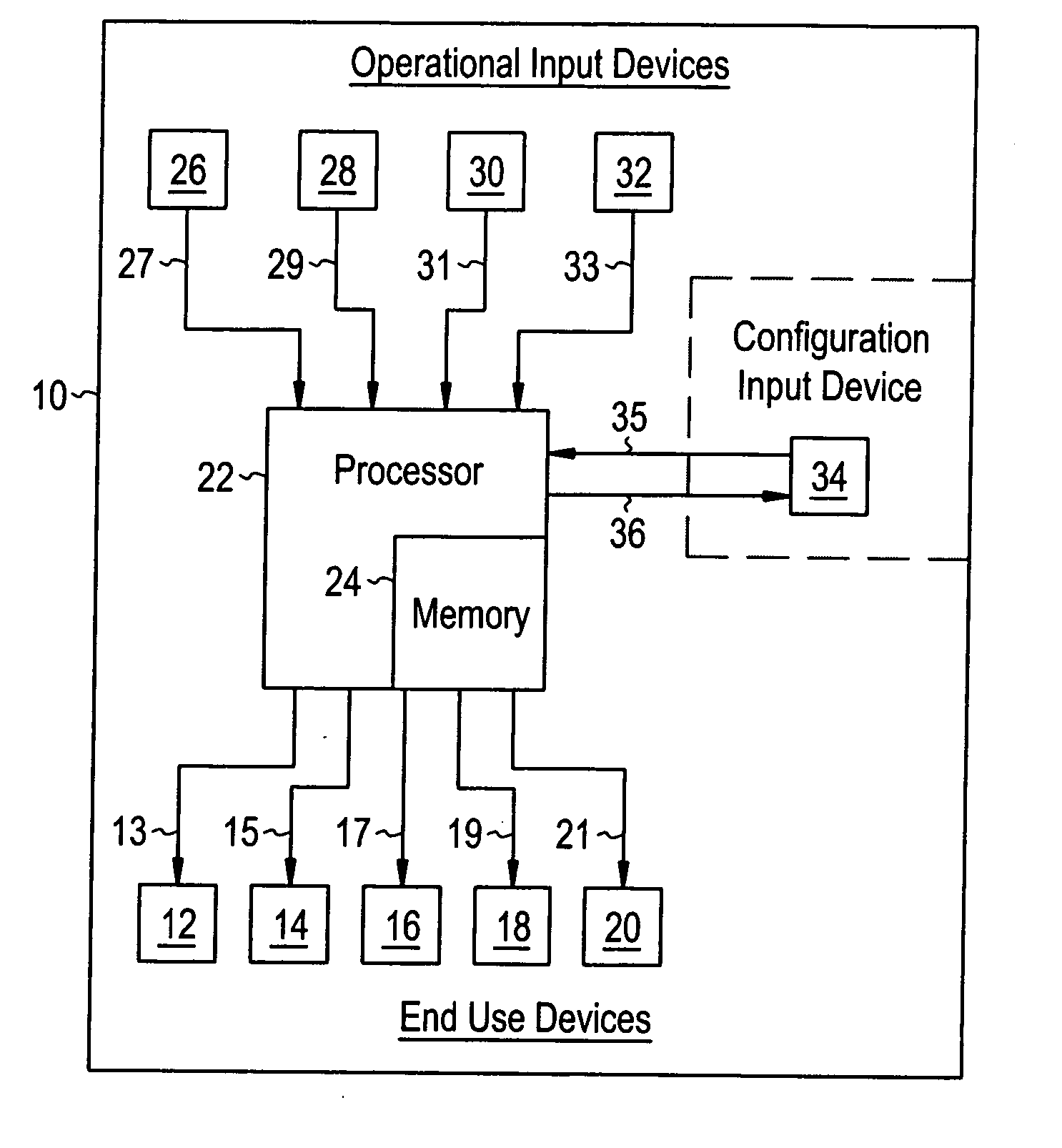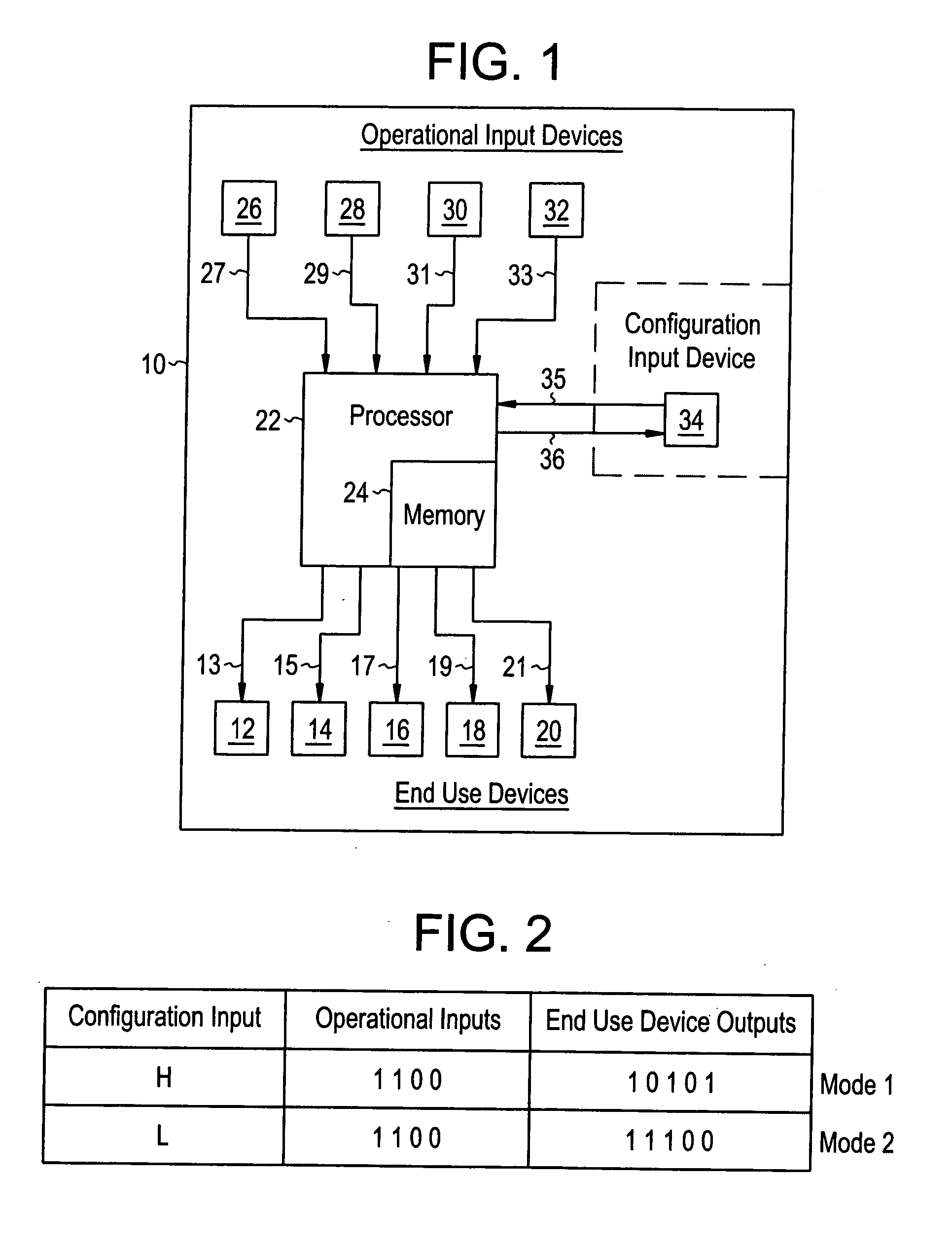Configurable locomotive
a locomotive and configuration technology, applied in the direction of locomotives, transportation and packaging, signalling indicators on vehicles, etc., can solve the problems of inability of railroad dispatchers to make available the best-suited locomotive for a particular mission, a significant amount of idle time of the switcher locomotive, and less than optimal configuration
- Summary
- Abstract
- Description
- Claims
- Application Information
AI Technical Summary
Problems solved by technology
Method used
Image
Examples
Embodiment Construction
[0013]FIG. 1 is a block diagram of a control system of a locomotive 10 that can be operated in one of several configurations in order to better match the locomotive 10 to a particular mission. The term configuration is used herein to describe the overall operating profile of the locomotive, including important operating characteristics and the manner in which the operating systems of the locomotive are controlled in response to operational inputs. A locomotive's configuration may include performance variables such as the peak output rating of the locomotive engine, the correlation between the throttle notch settings and the percentage of full power generated, engine emissions curves, acoustic emissions, electromagnetic emissions, the number of traction motors used, fuel economy performance, adhesion limits, the organization, presentation and functionality of operator controls, communications protocol, auxiliary functions, etc.
[0014] The operating systems of a locomotive include a p...
PUM
 Login to View More
Login to View More Abstract
Description
Claims
Application Information
 Login to View More
Login to View More - R&D
- Intellectual Property
- Life Sciences
- Materials
- Tech Scout
- Unparalleled Data Quality
- Higher Quality Content
- 60% Fewer Hallucinations
Browse by: Latest US Patents, China's latest patents, Technical Efficacy Thesaurus, Application Domain, Technology Topic, Popular Technical Reports.
© 2025 PatSnap. All rights reserved.Legal|Privacy policy|Modern Slavery Act Transparency Statement|Sitemap|About US| Contact US: help@patsnap.com



